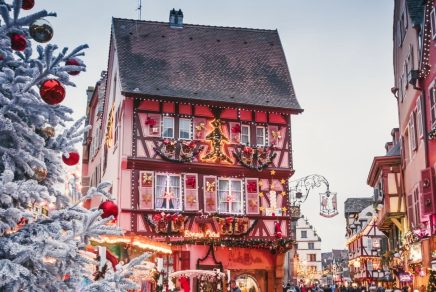Let’s come right out and say it: bubbles are in. Champagne is chic but expensive, and it no longer corners the market on effervescence. If you love all things bubbly, break out your flutes and take a sparkly sip of Crémant, cava or Prosecco.
Everyone knows Marilyn Monroe was crazy about champagne and chips, and the world’s sommeliers would agree. The advertising world created some thrilling matchups between a bevy of beauties and some pretty stunning bruts. Grace Kelly sang the praises of Taittinger, Isabelle Adjani shared her fame with Bricourt, and Scarlett Johansson gave her love to Moët & Chandon. These marketing coups gave champagne bubbles a reputation for perfection.
And, of course, connoisseurs will tell you that champagne is often made with great wine, and they’re right. The méthode champenoise (champagne method) is extremely demanding, and the wine requires at least three years to develop into a vintage. By comparison, many wines will make it to store shelves in less than six months. It’s no wonder the price of champagne is so high.
Most champagnes are made with Chardonnay, Pinot Noir and Pinot Meunier varietals. But the details often don’t matter when it comes to the “King of the Bubblies”; when the cork pops, people don’t tend to check the spec sheet. And producers know that it’s the symbol that counts. The prestige and sense of luxury that champagne exudes often revolve around the price. Let’s be honest, sometimes all it takes is to bring out a bottle for the ambience to start heating up.
No one would ever dream of breaking a bottle of Crémant on the bow of a ship, drinking cava during the Stanley Cup or spraying Prosecco over the Formula 1 podium. Perhaps the Marquise de Pompadour would have felt a little less beautiful if she’d been drinking Clairette. Beyond the region northeast of Paris, where are the world’s most prestigious sparkling wines produced, and are they worth drinking?
In 2016, consumers purchased around 325 million bottles of champagne. No other bubbly could knock this nectar of the Gods off its throne.
Crémant, the wine that earned its high self-esteem
Crémant’s great strength lies in one simple factor: great value for the money. Over 90 per cent of Crémants come from Alsace, Burgundy and the Loire Valley. Sure, you might find Crémants
elsewhere in France, but very few. The technique for making Crémant is identical to the méthode champenoise, but as that designation is reserved for wines from the Champagne region, we’ll call it the traditional method. The process ensures refined bubbles and confers an aura of quasi-immortality. Which is a great thing, because who wants a sparkling wine that goes flat in 10 minutes? One thing is sure: an excellent Crémant is better than a mediocre champagne.
Crémant is made with locally grown grapes, giving each kind of Crémant its own personality. In Burgundy, Crémant tends to be made with Chardonnay or Pinot Noir, the same grapes found in many champagnes, while the biggest producer in Alsace adds Riesling and Auxerrois grapes, along with white and grey Pinot. In the Loire Valley, the famous Chenin Blanc is a grape that makes for calm, appealing wines and forms the basis of some of the very best Crémants. There are Loire Valley Crémants that are good and elegant enough that they can easily go head-to-head with the greatest champagnes.
They say bubbles can go to your head, and it’s true. Carbonated gas accelerates the movement of alcohol in the blood. Beware of the empty glass syndrome; just because it’s refreshing doesn’t mean it won’t affect you!
Prosecco, a bubbly on the rise
Italians have been drinking it for 200 years, but we’ve only known about it for around a decade. Fans of the drink are quick to raise a glass to its flavour, which is fruity but not too sweet. The grapes are grown in northern Italy between Veneto and Friuli Venezia Giulia. Lovers touring Venice can often be seen toasting each other with this wine because, well, in Rome, do as the Romans do. This sparkling wine that makes lovebirds light-headed is Prosecco, the name once given to its grape variety.
Different from its neighbour, the effervescent Franciacorta, Prosecco is produced using a very unique method. The traditional method would never work because the Prosecco, a.k.a. Glera grape, which is used to produce this rising star of the bubbly world, reacts badly to fermentation in the bottle. A second fermentation in a stainless-steel vat is required, a method called charmat, which simply refers to fermentation in a closed vat. But in reality, nobody really cares whether Prosecco is made in a vat or a test tube. In the last 10 years, sales of Prosecco have quadrupled, going from 100 to 400 million bottles shipped to cellars around the world. The enthusiasm for this Italian bubbly is more than an infatuation; it’s true passion. Hardly surprising, given that it comes from the land of amore!
True to its reputation for seduction, Italy has given the world some irresistible bubbles. All that remains to lift if a glass to our lips…
Cava, bubbling over with democracy
Here’s another sparkling wine made with the traditional method, the very one used for champagne, but this time with Spanish grapes. In fact, close to 95 per cent of all cavas are produced in Catalonia’s Penedès region. Nevertheless, Rioja, Aragon and a few areas around Badajoz and Valencia also bottle cava. The grapes used for cava are Xarel-lo, Parellada and Macabeo, which are completely different from the ones used for champagne, apart from their bubbliness, of course. The region, soil and climate, along with production standards, give this Mediterranean bubbly its unique personality. Although it’s made using the traditional method, it can’t be compared to the world’s best sparkling wines (to the chagrin of the Spanish). There are many important subtleties in the production of the various nectars.
The average wine fan planning for festivities should know that there are three major categories of Catalonian bubbly: cava, aged for nine months; Cava Reserva, aged for 15 months, the minimal aging time for champagne; and Cava Gran Reserva, barrel-aged for 30 months. Obviously, the latter cava is subject to more serious controls and is a proper vintage. But while you may be tempted to look for the ways in which cava isn’t champagne, you’ll have more fun appreciating cava for what it is: a sunny sparkling wine, wonderfully affordable, a great après-ski or dinner-party beverage. And when you pick cava as your bubbly, you might have a bit of money left over for some other delicacies.
Choose cava when serving tapas. Perfect for brnging to friends’ houses for pre-dinner drinks, and if it’s a reserva, it’ll even hold its own with a paella.
Oh sweet…
You’ve decided to splurge on champagne, but your only reference is the colour of the label? You should know that champagne is differentiated by residual sugar as measured in grams per litre, and about 90 per cent of it is brut, with less than 12 grams of sugar per litre. Find below a small lexicon to better appreciate your champagne.
- Extra brut: between 0 et 6g/L
- Brut: less than 12g/L
- Extra sec: between 12g et 17g/L
- Sec: between 17g et 32g/L
- Demi sec: between 32 et 50g/L
- Doux: More than 50g/L




![Marseille_COUVERTURE[1] Marseille COUVERTURE](/wp-content/uploads/elementor/thumbs/Marseille_COUVERTURE1-rehd969x0bx0iqrlg0e2y32782i88bao83rijrgn6w.jpg)
![voyage_de_ski_dans_les_alpes_-_ski_trip_in_the_french_alps_-_COUVERTURE[1] Voyage de ski dans les Alpes - Ski trip in the French Alps - Couverture](/wp-content/uploads/elementor/thumbs/voyage_de_ski_dans_les_alpes_-_ski_trip_in_the_french_alps_-_COUVERTURE1-e1763071913669-renyn82g4stc735hil5xc0ospu44nnis74gdvy5d9k.jpg)


